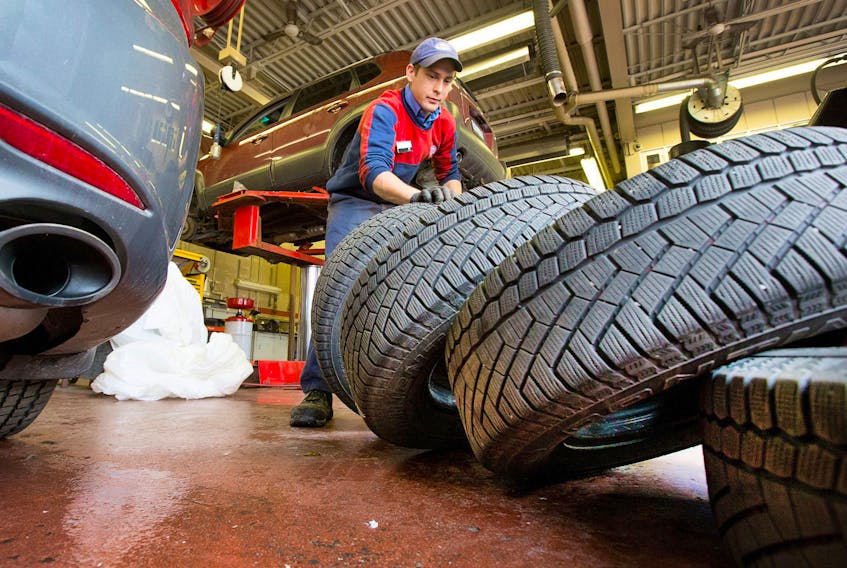No one really likes to spend money on vehicle repairs and maintenance, but there are some things that might cost a few bucks initially, yet will save you more dollars (and maybe even your life) down the road. Here are a few things to keep in mind for your seasonal tire changeover — you’re getting that done soon, right?
Checking the balance on assembled tires and wheels
Most drivers opt to install their winter tires on a second set of wheels. Inexpensive steel wheels can save the dismounting and remounting charges every seasonal changeover, and can prevent road salt and grit from damaging the finish on pricier alloy wheels. And for extra convenience, you can avoid the lineups at the tire shop on the first major snowfall of the season by putting them on your car yourself in your driveway or garage.
But all this leaves out one detail: checking the balance on those units. Wheel balance is a finicky thing; as little as a fraction of an ounce can mean the difference between having a perfectly balanced wheel or an annoying vibration at highway speeds. When assembled tires and wheels are stored for a season, the stationary weight on the tread surface can shift the balance point ever so slightly, but often just enough to lead to a vibration. This can be compounded by the fact that the overwhelming majority of tires and wheels are balanced off the vehicle, which doesn’t take into effect wheel hubs or brake units. Balancing them on the vehicle provides a much better end result, but few shops have the equipment. So, do yourself a favour and have the balance checked before putting them on.
Re-torquing wheel nuts after installing rims
If your shop doesn’t suggest this every time they remove a wheel for seasonal changes or any type of service, find another shop. While alloy wheels have made this more necessary than ever, plain steel wheels aren’t immune to the problem. Small bits of rust can get trapped between the wheel and the central hub on your vehicle, preventing the lug nuts from achieving maximum clamping force. A few days of driving can loosen the nuts, leading to disastrous results.
If you don’t plan on returning to your shop after 100 kilometres or so for a free re-torque — or at least doing it yourself with the proper tools — let us know where you usually drive, so we can avoid running into you or one of your wheels.
Cleaning wheel hub surfaces at seasonal tire changes
When tire shops get busy, this can be missed but it’s crucial. Taking a steel brush to the wheel hub’s rim mounting lip is as important as having the wheel nuts re-torqued, and one doesn’t eliminate the need for the other. For DIYers, it’s a quick job made even easier with the right brush head for a power drill or wheel wrench gun. Also take the time to check the mounting surface on your wheels; they need to be as free of corrosion as the vehicle’s hubs.
Copyright Postmedia Network Inc., 2020









